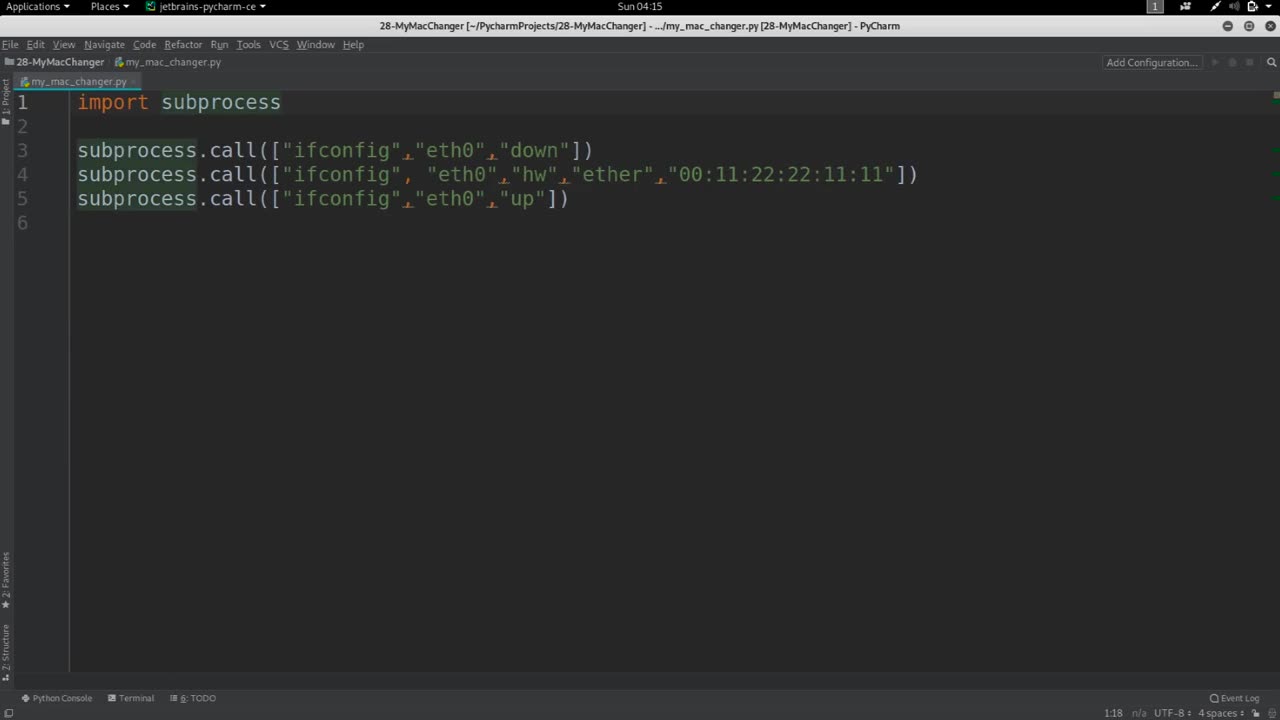Premium Only Content

Chapter-33, LEC-5 | How to Subprocess | #youtube #ethicalhacking #eduacation
#ethicalhacking #hacking #rumble #virel #trending #education
#ethicalhacking #hacking #rumble #virel #trending #education
Subscribe to our channel YouTube channel.❤️
/@thecybersecurityclassroom
Followe me on Rumble.💕
/@the1cybersequrityclassroom
#hacking #growthhacking #biohacking #ethicalhacking #lifehacking #whacking #hackingout #happyhacking #brainhacking #travelhacking #househacking #brainhackingum
In Python, the subprocess module allows you to spawn new processes, connect to their input/output/error pipes, and obtain their return codes. Here's how you can use the subprocess module in your Python code:
1. Import the subprocess module at the beginning of your Python script by adding the following line of code:
python Copy code
import subprocess
2. Call a command using the subprocess module by using the subprocess.run() function. For example, to run the ls command in the current directory, you would write the following code:
python Copy code
subprocess.run(["ls"])
The subprocess.run() function takes a list of arguments as its first parameter, where each argument is a string representing a command or a command-line option. In the example above, we pass the ls command as the argument.
3. You can also capture the output of the command by passing the capture_output=True argument to subprocess.run(). This will return a CompletedProcess object that contains the output of the command as a byte string. For example, to capture the output of the ls command in the current directory, you would write the following code:
python Copy code
result = subprocess.run(["ls"], capture_output=True)
print(result.stdout.decode())
The result variable will contain the CompletedProcess object, which you can use to obtain the output of the command using the stdout attribute. We decode the byte string to a string using the decode() method, and then print the output.
4. You can also pass input to the command using the input argument to subprocess.run(). For example, to pass the string "hello world" to the echo command, you would write the following code:
python Copy code
result = subprocess.run(["echo"], input=b"hello world\n", capture_output=True)
print(result.stdout.decode())
In this example, we pass the b"hello world\n" byte string as input to the echo command. The b prefix indicates that it is a byte string, and the \n character represents a newline.
These are just a few examples of how you can use the subprocess module in Python. The subprocess module offers many other functions and options for more advanced use cases.
Subscribe to our channel YouTube channel.❤️
/@thecybersecurityclassroom
Followe me on Rumble.💕
/@the1cybersequrityclassroom
-
 1:17:52
1:17:52
Dialogue works
3 days ago $10.17 earnedMartin Armstrong: This Is How World War III Starts… And It Already Has
36.4K18 -
 38:16
38:16
daniellesmithab
3 days agoAlberta Update: Getting Kids Back to the Classroom
28.4K11 -
 20:48
20:48
BlaireWhite
5 days agoTrans TikTokers Are Crashing Out (Over Nothing)
32.6K11 -
 2:07:06
2:07:06
Side Scrollers Podcast
22 hours agoHasan Piker CAUGHT LYING AGAIN + Twitch URGES LEFTIST IDEOLOGY + More | Side Scrollers
74.8K11 -
 8:40
8:40
MattMorseTV
18 hours ago $14.34 earnedSchumer just KICKED OFF the Left-Wing CIVIL WAR.
35.8K34 -
 21:39
21:39
Nikko Ortiz
2 days agoI Take A North Korean Shooting
33.5K6 -
 1:46:26
1:46:26
The Michelle Moore Show
21 hours ago'The Religion Invasion In the U.S. and the Deep State Agenda' Guest, Mark Taylor: The Michelle Moore Show (Nov 3, 2025)
41.9K42 -
 LIVE
LIVE
TruthStream with Joe and Scott
5 days agoSovereign Codes & Cosmic Infrastructure,Ufo's, UAP's, Monads, Matrix Satellites, Interstellar Visitors, SYRONA #505
305 watching -
 LIVE
LIVE
Lofi Girl
2 years agoSynthwave Radio 🌌 - beats to chill/game to
142 watching -
 5:55:11
5:55:11
MattMorseTV
14 hours ago $103.92 earned🔴Trump's '60 Minutes' INTERVIEW + MUCH MORE.🔴
165K53